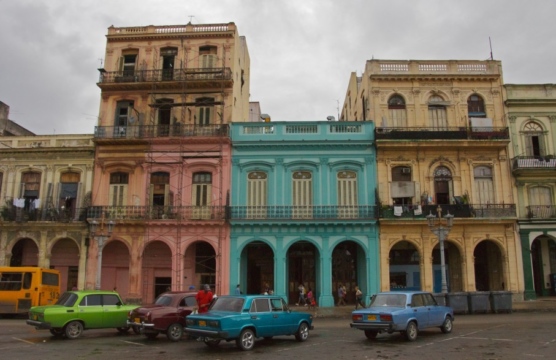
What Will a New Generation of Leadership Mean for Cuba?
Cuba’s parliament has approved Miguel Díaz-Canel as Cuba’s first vice president. What will this mean for Cuba?
This post is also available in: Español
Seven years ago, at his first meeting with hemispheric leaders in Trinidad and Tobago, Barack Obama was clear what he had in mind for US Latin American policy. Responding to Nicaraguan President Daniel Ortega’s scathing criticism of US interventionism in the region, including the attempt to overthrow Cuban leader Fidel Castro in 1961, Obama said:
“To move forward, we cannot let ourselves be prisoners of past disagreements. I am very grateful that President Ortega did not blame me for things that happened when I was three months old. Too often, an opportunity to build a fresh partnership of the Americas has been undermined by stale debates. And we've heard all these arguments before.”
There is no better example of how Obama turned that rhetoric into reality than the decision announced jointly with Cuban president Raul Castro on December 17, 2014, to normalize relations between the United States and Cuba. After nearly six decades of estrangement, both governments agreed to begin a new chapter of greater engagement and cooperation. Washington’s failed and counterproductive policy of economic punishment and diplomatic isolation, largely aimed at changing the regime in Havana, was thankfully ending.
Obama’s historic visit to Cuba this week—the first by a US president in nearly nine decades— was of enormous symbolic significance. In his masterful address at the Grand Theater in Havana, Obama said that he was there to bury the last remnant of the Cold War in the Americas and extend the hand of friendship to the Cuban people. He also recognized the important changes that occurred in Cuba since Raul Castro took over from his brother Fidel. Obama’s main objective was to sustain and accelerate the positive changes that had taken place since the rapprochement with Washington, such as agreements to restore direct flights and mail service between both countries.
Obama was particularly effective in winning over his Cuban audience by sprinkling his speech with apt historical references to shared culture and values between the two societies, his forceful rejection of the US trade embargo—which can only be lifted by the US Congress—and by quoting Jose Martí, hero of the island’s independence. But his conciliatory words were skillfully and sensitively balanced by a compelling argument in favor of human rights, democratic freedoms, and pluralism. Obama had little choice in doing so, especially after Cuban police rounded up some 50 dissidents for holding a street demonstration the day Obama arrived.
[caption id="attachment_48365" align="alignleft" width="495"]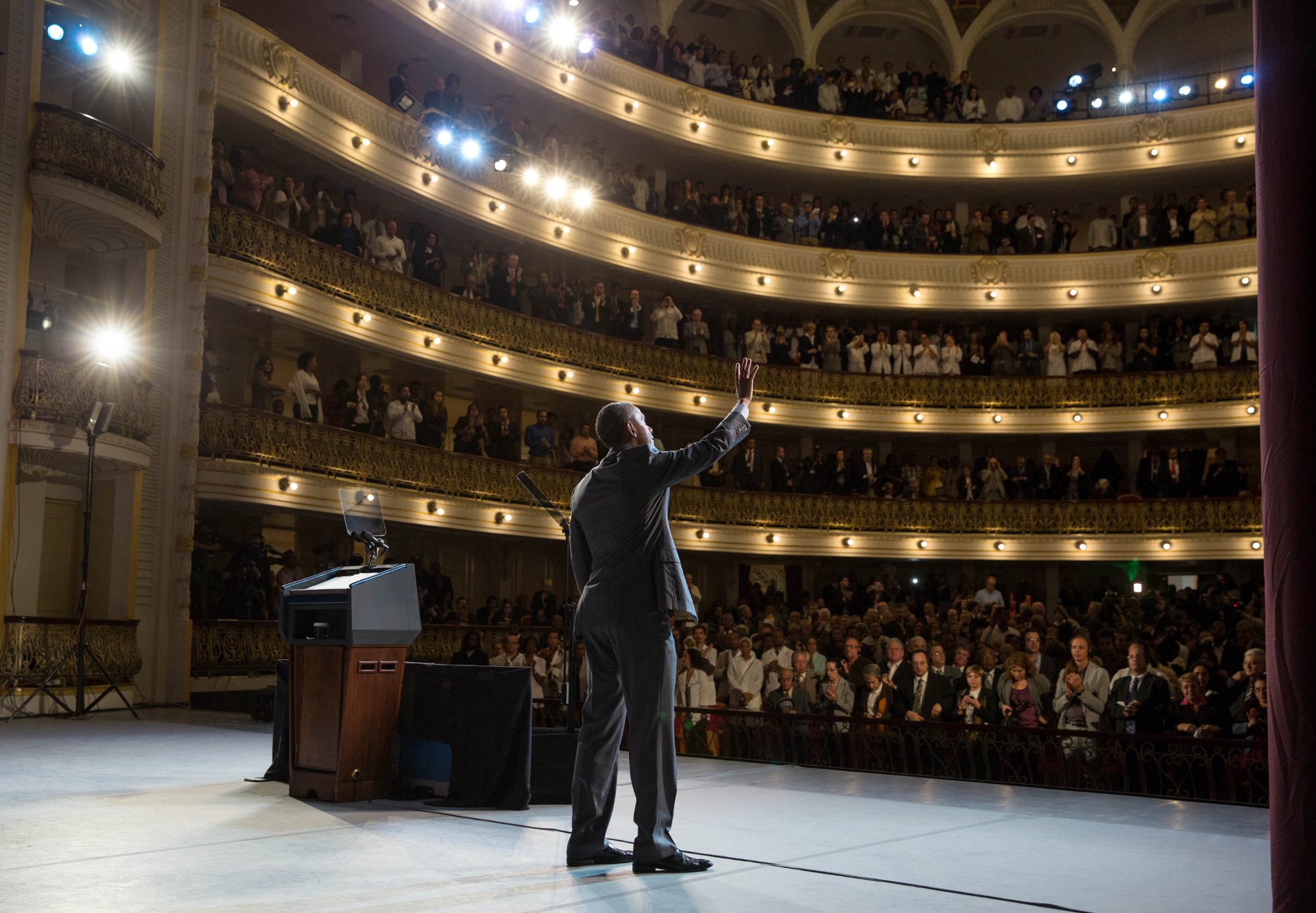 President Barack Obama waves after delivering remarks to the people of Cuba at the Gran Teatro de La Habana Alicia Alonso in Havana, Cuba, March 22, 2016.
President Barack Obama waves after delivering remarks to the people of Cuba at the Gran Teatro de La Habana Alicia Alonso in Havana, Cuba, March 22, 2016.In a direct challenge to Castro, and speaking in Spanish, Obama was clear: “El futuro de Cuba tiene que estar en manos del pueblo cubano” (Cuba's future must be in the hands of the Cuban people), adding that Cubans have a right to free speech, freedom of assembly, and to democratically elect their leaders. The joint press conference between Obama and Castro showed the contrast between two very different styles: the US president seemed amused while the Cuban leader grew flustered by questions about political prisoners in the island.
By all accounts, and unsurprisingly, Obama’s visit had a deep impact among ordinary Cubans. Obama helped go beyond the “stale debates” he criticized seven years ago. Whether these changes turn into a new era of improved relations between the US and Latin America will depend on who succeeds Obama as president, and on the will of Latin Americans themselves.
To be sure, Cuba will not change overnight as a result of Obama’s speech or visit. But through symbols and gestures, and by presenting a new picture of the United States—embodied by Obama himself—the visit will likely contribute, over time, to incremental progress and greater openness in Cuba, and will make the US-Cuba thaw irreversible. Other leaders visiting Cuba, from Europe and Latin America most of all, should take a cue from Obama and reinforce his powerful message.
Cuba’s parliament has approved Miguel Díaz-Canel as Cuba’s first vice president. What will this mean for Cuba?
The removal of Cuba from the list of states sponsoring terrorism has opened the way for the establishment of diplomatic relations.
Jorge I. Domínguez discusses Cuba’s political future at a private roundtable
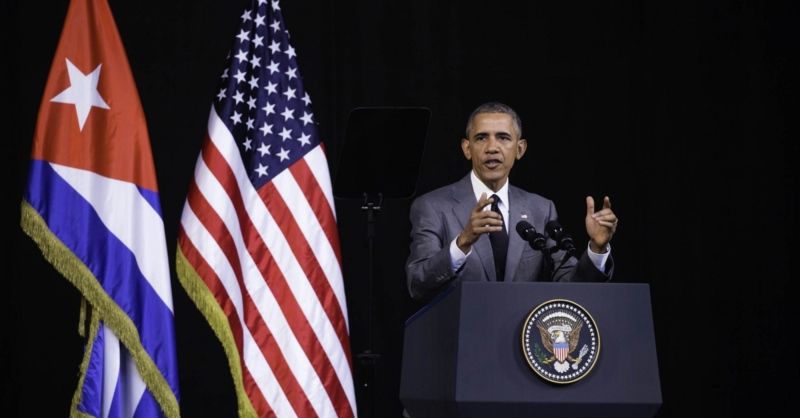 Official White House Photo by Pete Souza
Official White House Photo by Pete Souza
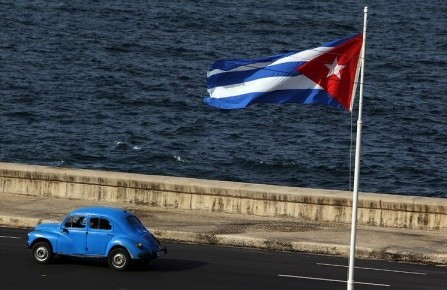 Video
Video
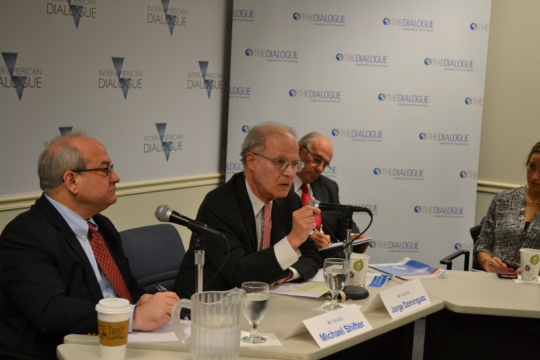 Video
Video